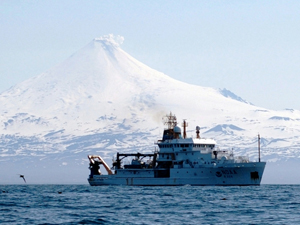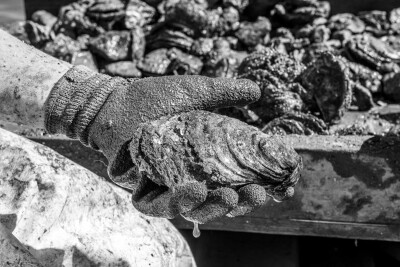Machinery-generated noise and vibration can be a real pain when you are on a boat. In the short term it, affects the amount of sleep you get, general level of irritability (that goes a long way in determining how well you get along with the crew) and how aware you are of what’s going on around you. That final component could turn into a safety issue.
In the long term, prolonged periods of noise and vibration causes loss of hearing and other physical ailments.
There are two types of noise — airborne and structural. In National Fisherman’s November issue, part of the Boats & Gear story on generators (“New generation,” p. 32) discusses these noises and focuses on an isolation mount from Christie & Grey, a noise, vibration and shock reduction outfit in Fairhaven, Mass.
Vibration and engine noise have an adverse effect on fishermen, but fish also hear noise from approaching boats and appear to respond differently to quieter boats.
Between 2006 and 2008, NOAA matched up two of its fishery research boats, the Oscar Dyson and the Miller Freeman, for a simultaneous survey of walleye pollock in Alaska’s Bering Sea, Shumagin Islands and Shelikof Straits to see if the pollock reacted differently to the two boats.
The Oscar Dyson was commissioned in 2005 and was built with acoustic quieting technologies, including vibration mounts from Christie & Grey. The Miller Freeman was an earlier generation design without the acoustic quieting features.
In the eastern Bering Sea at depths less than 120 meters, both boats recorded statistically equivalent densities of pollock. It was the same at depths of 400 to 700 meters at Bogoslof, an island in the Bering Sea.
But around the Shumagin Islands and Shelikof Straits the results were different. In the Shumagin Islands at depths of 100 to 200 meters, pollock abundance counts for the Oscar Dyson were 31 percent higher than for the Miller Freeman and 13 percent higher at depths of 200 to 300 meters in the Shelikof Straits.
The differences were likely greater in shallower water because the fish were closer to the boats. In addition, there was a stronger diving response from the fish when the Miller Freeman was in the area.
This was the first demonstration that noise reduction equipment can reduce the likelihood of fish avoiding the boat. If investing in noise reduction equipment improves fish estimates, it would seem to follow that noise reduction could increase the amount of fish caught on commercial fishing boats.
Photo: NOAA's R/V Oscar Dyson at work; NOAA







